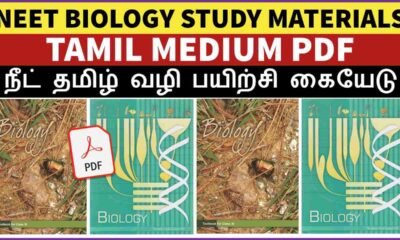Blog
Difference Between Euchromatin and Heterochromatin

In this article we will discuss about difference between euchromatin and heterochromatin
Difference Between Euchromatin and Heterochromatin
1. Structure: Euchromatin has a less condensed structure, appearing as a loosely packed form of chromatin, while heterochromatin is highly condensed and appears as a tightly packed form of chromatin.
2. Staining: Euchromatin stains lightly with DNA-specific dyes, while heterochromatin stains more intensely.
3. Gene Density: Euchromatin is gene-rich, containing actively transcribed genes, while heterochromatin is gene-poor, containing mostly inactive or silenced genes.
4. Transcriptional Activity: Euchromatin is transcriptionally active, allowing gene expression, while heterochromatin is transcriptionally inactive or has limited gene expression.
5. Replication Timing: Euchromatin replicates earlier in the S phase of the cell cycle, while heterochromatin replicates later.
6. Chromosomal Location: Euchromatin is distributed throughout the genome, occupying the majority of the chromosome arms, while heterochromatin is typically found near the centromeres and telomeres, forming distinct regions.
7. DNA Methylation: Euchromatin has a lower level of DNA methylation, while heterochromatin is often heavily methylated.
8. Histone Modifications: Euchromatin is associated with histone modifications that promote gene activation, such as acetylation, while heterochromatin is associated with modifications that promote gene silencing, such as methylation.
9. Accessibility to Transcription Factors: Euchromatin provides a more accessible environment for transcription factors to bind and regulate gene expression, while heterochromatin restricts access and hinders transcription factor binding.
10. Chromatin Remodeling: Euchromatin exhibits a more dynamic chromatin structure that is more amenable to remodeling, while heterochromatin is relatively stable and less prone to remodeling.
Summary: Difference Between Euchromatin and Heterochromatin
- Euchromatin has a less condensed structure, while heterochromatin is highly condensed.
- Euchromatin is gene-rich and transcriptionally active, while heterochromatin is gene-poor and transcriptionally inactive.
- Euchromatin replicates earlier in the cell cycle, while heterochromatin replicates later.
- Euchromatin is distributed throughout the genome, while heterochromatin is typically located near centromeres and telomeres.
- Euchromatin has lower DNA methylation levels, while heterochromatin is often heavily methylated.
- Euchromatin is associated with histone modifications that promote gene activation, while heterochromatin is associated with modifications that promote gene silencing.
- Euchromatin provides accessibility to transcription factors, while heterochromatin restricts access.
- Euchromatin exhibits a more dynamic chromatin structure, while heterochromatin is relatively stable.
- Euchromatin is lightly stained, while heterochromatin stains more intensely.
- Euchromatin is more amenable to chromatin remodeling, while heterochromatin is less prone to remodeling.

 Entertainment1 month ago
Entertainment1 month agoIbomma Bappam: Redefines Telugu Streaming Trend

 Blog2 months ago
Blog2 months ago[PPT] The living world Class 11 Notes

 Blog2 months ago
Blog2 months ago[PPT] Human Reproduction Class 12 Notes

 Blog1 month ago
Blog1 month agoIosmirror.cc Apk: Enables Smart Screen Sharing
- Blog2 months ago
PG TRB Botany Study Material PDF Free Download
- Blog2 months ago
Class 12 Biology Notes Chapter wise PPT
- Blog2 months ago
Class 11 Biology Notes Chapter wise PPT

 Blog2 months ago
Blog2 months agoDownload NEET Biology Study Materials in Tamil












